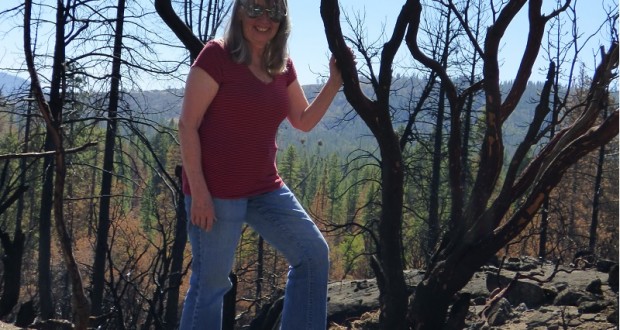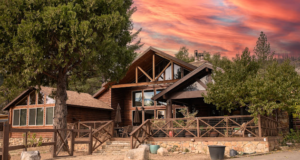Written by Marcia Penner Freedman –
We’ve chosen to live in a forest, tens of thousands of us in eastern Fresno, Madera, and Mariposa Counties. Not just any forest, but a Sierra forest. And that means we’ve chosen to live with the certainty of fire. To complicate things, our communities sit at the edge of the million-acre Sierra National Forest, where wildfire is as natural as the wind.
Welcome to the Wildland-Urban Interface, commonly referred to as the WUI (pronounced woo-eee). This label describes areas such as ours, where wildfire and structural fire commingle, and where firefighters with skill in defending homes work side by side with those trained in suppressing wildfire.
In the Sierra, the roots of our WUI can be traced back to the Gold Rush. The settlers that poured into the area after 1848 built their towns and ranches and farms in the midst of the forest. They fenced in their livestock and planted orchards. Such permanent structures made them vulnerable to ruin by wildfire. But it was a desirable place to live. And more came. And here we are.
Although official firefighting policy concerning the WUI was put in place a mere twenty-five years ago, catastrophic wildfires involving human encroachment have been occurring in the United States for over a century. Amongst the earliest are the Peshtigo, Wisconsin fire of 1871 which killed over a thousand people and burned a million acres; the Hinckley, Minnesota fire of 1894 which killed over five hundred people; and, in 1910, a firestorm of hurricane-intense winds that roared through national forests in Idaho, Montana and Washington. Dubbed the Big Burn, this fire—before unseasonable rains could douse the flames two days after it began—killed almost a hundred people, annihilated seven towns, and destroyed three million acres of timber.
After that fire, the government acknowledged the need for federal and state firefighters to work together during wildland fires that threaten population centers. In March of 1911 Congress passed a piece of legislation called the Weeks Act which, among other things, provided for interagency firefighting cooperation. This provision of the Weeks Act is relevant to this day.
Fast forward a hundred years: Research on the WUI during the last decades of the twentieth century produced data on fire behavior related to wildland fuels and to building materials and design. Other research focused on wildfire management. And others looked at the effects of wildfire on structures related to distance. For example, in a series of studies it was found that 100 feet acts as a buffer between the large flames of burning shrubs and tree canopies (crown fires) and a home’s wood exterior. Thus the mandate of defensible space.
In 1986, the first conference on the wildland-urban interface took place. Sponsored by the National Forest Service, in conjunction with the National Fire Protection Association, this gathering spawned the Firewise Initiative, which started out as an information source to awaken awareness of the WUI problem. Over the twenty-five years of its existence, Firewise has evolved into a national program of community involvement.
So here we are, learning to adopt such ideas as defensible space and firewise living. We’re becoming familiar with terms like backfire, crown fire, blow up, and fire storm. We’ve learned to read the signs of fire—the telltale sky when the sun turns orange behind a shroud of brown haze, or when the air is persistently smoky, day after day. We’ve become accustomed to seeing homemade signs adorned with flowers and hearts and happy faces tacked up on fence posts and telephone poles, thanking firefighters for saving our homes.
If you haven’t already experienced fire, what will be your initiation? A robocall from the county telling you to evacuate because the “fire is coming your way?” Will you wake up one night to a sense of something wrong, only to see a strip of flame creeping over the ridge along the edge of your property? Maybe your introduction will happen during a wildfire that chokes the air with smoke for two weeks, and firefighters become a fixture in your town.
Whatever your personal experience, if you have lived through a summer in the foothills and mountains adjacent to the Sierra National Forest, you haven’t evaded fire. You have not been spared the warnings of foresters, fire ecologists, firefighters, and government officials that fires are inevitable. You have developed a sense that wildfires are getting hotter and harder to contain, that firefighters increasingly struggle to keep fires from encroaching onto private property. In other words, you’ve become a full-fledged member of the WUI, whether you had realized it or not.
Marcia Penner Freedman is the author of “Fighting Fire in the Sierra National Forest,” History Press, 2015



